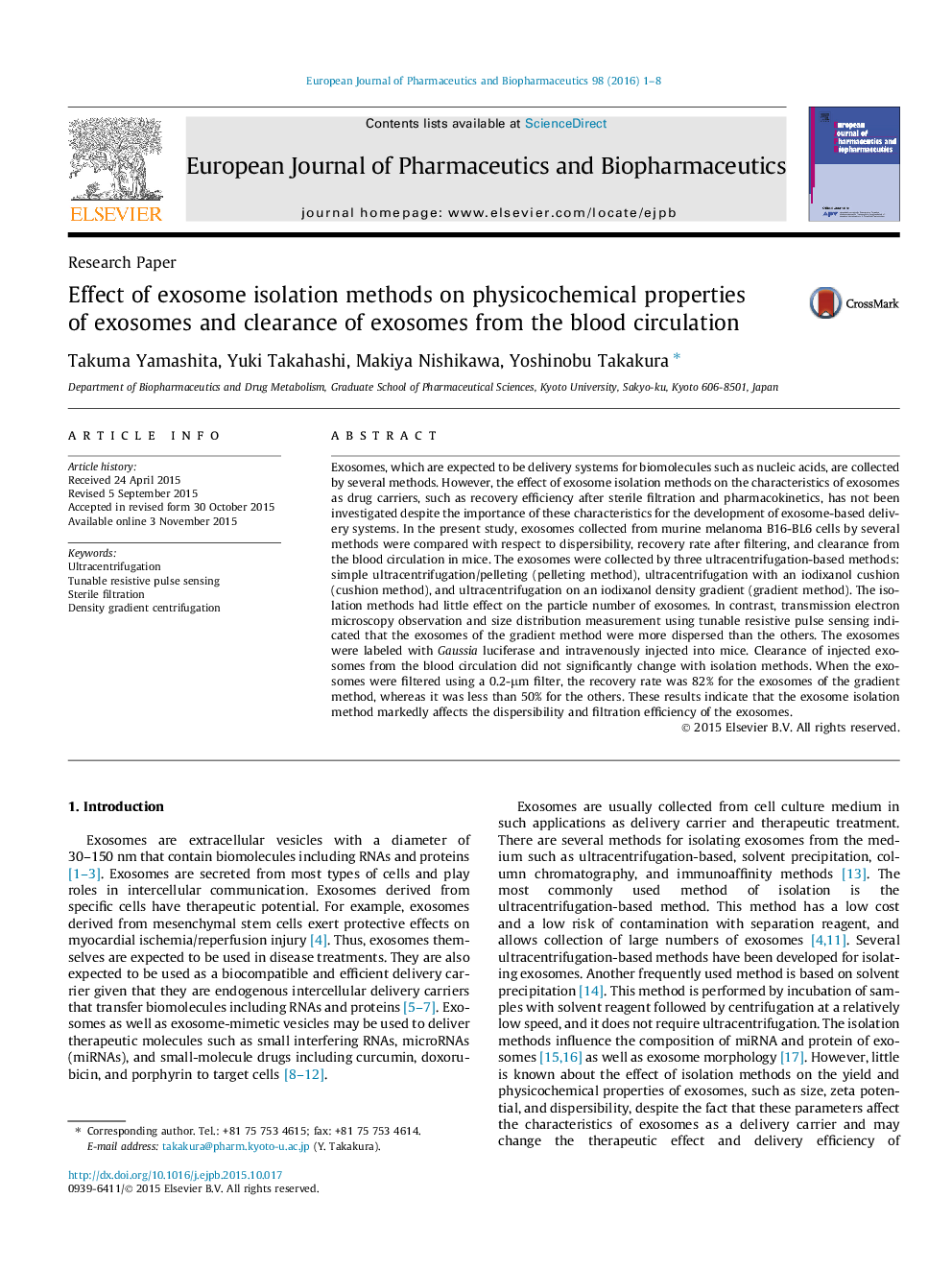| Article ID | Journal | Published Year | Pages | File Type |
|---|---|---|---|---|
| 2083260 | European Journal of Pharmaceutics and Biopharmaceutics | 2016 | 8 Pages |
Exosomes, which are expected to be delivery systems for biomolecules such as nucleic acids, are collected by several methods. However, the effect of exosome isolation methods on the characteristics of exosomes as drug carriers, such as recovery efficiency after sterile filtration and pharmacokinetics, has not been investigated despite the importance of these characteristics for the development of exosome-based delivery systems. In the present study, exosomes collected from murine melanoma B16-BL6 cells by several methods were compared with respect to dispersibility, recovery rate after filtering, and clearance from the blood circulation in mice. The exosomes were collected by three ultracentrifugation-based methods: simple ultracentrifugation/pelleting (pelleting method), ultracentrifugation with an iodixanol cushion (cushion method), and ultracentrifugation on an iodixanol density gradient (gradient method). The isolation methods had little effect on the particle number of exosomes. In contrast, transmission electron microscopy observation and size distribution measurement using tunable resistive pulse sensing indicated that the exosomes of the gradient method were more dispersed than the others. The exosomes were labeled with Gaussia luciferase and intravenously injected into mice. Clearance of injected exosomes from the blood circulation did not significantly change with isolation methods. When the exosomes were filtered using a 0.2-μm filter, the recovery rate was 82% for the exosomes of the gradient method, whereas it was less than 50% for the others. These results indicate that the exosome isolation method markedly affects the dispersibility and filtration efficiency of the exosomes.
Graphical abstractFigure optionsDownload full-size imageDownload high-quality image (190 K)Download as PowerPoint slide
